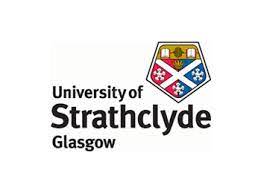University of Strathclyde: Hope Triptych sculpture at Strathclyde campus for COP26 and beyond
The University of Strathclyde is host to one of a trio of public sculptures sited across Glasgow for COP26 and beyond that reflect the scale of the climate emergency.
The 3.5 metre ‘Hope Triptych’ in the University’s Rottenrow Gardens is one of a series of public art installations created by artist and designer Steuart Padwick as a reminder of the fragility of both our environment and our mental health.
The sculpture, which was launched at the Strathclyde-hosted United Nations Climate Conference of Youth (COY16) with the Strathclyde student union, StrathUnion, is an adaptation of the primary 23 metre high Hope Sculpture sited at Cuningar Loop, part of Clyde Gateway. It features an age, gender, race neutral child, embracing the surrounding nature and reaching out to a greener, hopeful future.
Hope Sculpture
A third sculpture, ‘Beacon of Hope’ is also located at the city’s Glasgow Central Station, with visitors encouraged to access the sculptures via a walking and cycling route that connects the pieces.
Reclaimed steel
The Strathclyde sculpture is made up of of three colourful figures, symbolising the power of coming together and is made from reclaimed sheet steel with a low carbon cement-free concrete foundation.
Like the other works, it’s inscribed with messages of hope from leading Scottish writers, poets and school children.
Dr Rodge Glass, author and the Convener of the MLitt in Creative Writing at Strathclyde, and fellow lecturer and award winning novelist Jenni Fagan have penned messages, along with fellow Scottish authors Ali Smith, and Nick Brooks.
Sculptor Padwick, who has designed several major public art installations in support of mental health, including the’Head Above Water’ sculpture on London’s South Bank, worked with Mental Health Foundation on all messaging and each sculpture has mental health signposting close by to offer a range of support.
He said: “We all need to address this new global agenda so our young can embrace a future of hope.
“ It is very simple, why would anyone want to poison their future?”
Professor Sir Jim McDonald, Principal of the University, said:
The Hope Triptych is a powerful symbol of how we can all work to deliver a net zero and sustainable future. The backdrop of COP26 being in Glasgow allows this sculpture to highlight the need to address the global challenge of climate change. This piece also serves as a permanent reminder of how our mental wellbeing is undeniably connected with the wider world.
Professor Sir Harry Burns, Director of Global Public Health at the University of Strathclyde, said “The Hope Triptych reminds us all that even in the bleakest of times, we can offer a beacon of hope for the future. Hope empowers us to act, and by taking steps to protect the future of our global environment, we can also safeguard our physical and mental wellbeing.”
Low carbon
All the sculptures are made from low carbon, reclaimed, recycled or sustainable materials, of which, almost all have been locally sourced, with the build demonstrating a 75% lower carbon impact.
Hope Triptych
Dr Roddy Yarr, the Executive Lead of Sustainability at Strathclyde, said “We are proud to host the Triptych at the heart of our campus and hope it will become a place for the entire University community to reflect on its message of hope.
“It’s fitting the sculpture, which is crafted from reclaimed metal, is sited here as it embodies the commitment of the University towards sustainability.”
The principal build partners for the project include lead consultant Ramboll, lead contractor Urban Union (part of Robertson Group), Aggregate Industries (member of Holcim) and Keltbray.
The team has also developed dedicated activities for school children, giving an insight to the wide-ranging career opportunities in the construction sector. The games, tasks and discussion topics highlight the important role designers, engineers, constructors and scientists all play in creating a more sustainable future.
Strathclyde student, former StrathUnion president Kayla Burns, who is also climate and social justice activist said:
The Hope Sculpture serves as an astounding visual reminder to all of us of the beautiful and better future that we can create.

